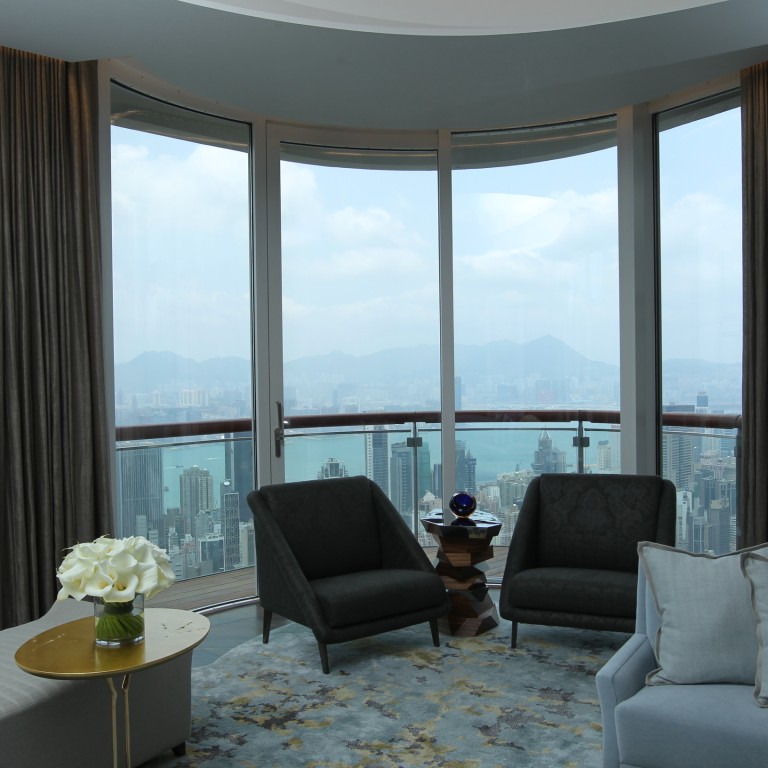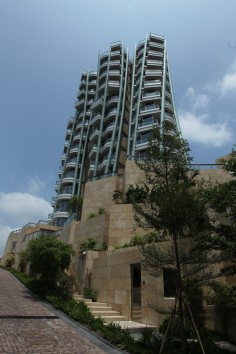
The HK$470 million Hong Kong apartment that just won't sell
It's Hong Kong's most expensive apartment - but it has been withdrawn from sale after bids fell short of the reserve price
It probably seemed like a good idea at the time. If you have trouble finding a buyer for the most expensive apartment ever listed in Hong Kong (on a square foot basis), best not worry, just hang on. One will eventually come along - probably from the mainland. Just give it some time.
Or at least that’s how Swire Properties’ management likely sized up the situation back in December when they decided to withdraw from sale an upper floor unit of its luxury Opus apartment tower after bids fell short of its HK$470 million reserve price. The tower, a marvel of fluid lines by architect Frank Gehry, offers some stunning views from its perch up on the peak.
Its price, however, is enough to make even billionaires cringe. Consider that media mogul Rupert Murdoch in February paid US$57.25 million for a New York apartment following his split from Wendy Deng. Murdoch’s new bachelor pad spans 10,000 square feet spread over the top four floors of a 60-storey tower on Manhattan’s East 23rd street. The 11th floor unit that went on tender at the Opus is 5,400 sq ft.
It’s a prime asset, we’re not so concerned about when we sell it
For another point of reference, consider that Swire Properties’ net profit for the recently-ended financial year was HK$6.348 billion. At asking price, that single Opus unit is equivalent to 7.4% of the group’s profit.
Swire Properties Chief Executive Martin Cubbon said he was happy to hold the apartment as finished inventory. He indicated that it could be rented out, as the company has done with other units that it owns in the building. Seven of 12 units in the development are tenanted.
“It’s a prime asset, we’re not so concerned about when we sell it,” Cubbon said recently. He acknowledged there had been bids by the December 12 deadline, but that they “weren’t quite enough” to trigger a sale.
Sales at the development just a few months earlier had been more successful. A ninth-floor apartment sold for HK$455 million in October, setting a record at the time as the most expensive in Asia on a per square foot basis.
Still, one has to wonder whether there’s a sense of regret now settling in among senior Swire management that they should have been more aggressive in liquidating inventory when they had the chance.
It doesn't appear wealthy mainlanders will be hunting for trophy properties in Hong Kong anytime soon, even as there’s few signs yet of a major slowdown in spending by cross-border visitors.
But data coming out of China in recent weeks isn’t comforting.
Take the nationwide housing data released last week.
Average home prices fell 3.8% in the first two months of the year, marking the first year-on-year drop since February 2012.
The figures were compiled by Nomura using CEIC data to create what they say is a more accurate snapshot of what’s going on inside China’s housing market. In compiling and plotting the data, they gave more weight to China’s third and fourth tier cities, which account for 67% of the housing under construction. Nomura calls the 70-city price index which shows average prices as still rising “misleading” because it overlooks smaller urban areas.
Check out this chart on what’s really going on, courtesy of Nomura.

In a blunt assessment, Nomura’s Hong Kong-based analysts sum up the situation: “We believe China’s property market may have passed a critical turning point and will go into a downward cycle as the oversupply problem worsens.”

Keep in mind that what’s really important here is the shifting market psychology. It may take many months to play out, but a gradual erosion of confidence is underway. Things are likely to come unglued, prompting the PBOC to loosen lending standards. Nomura thinks such steps are inevitable, initially in the form of a cut to banks’ reserves requirements, probably by July.
Here’s some other warning signs that not all is well.
Corporate bond defaults. Beijing’s decision to allow the domestically-issued corporate bonds of a solar cell maker to default earlier this month, the first by an onshore Chinese company in 17 years, was initially cheered by analysts who said it would help instill market discipline. Meanwhile, revelations last week that Chinese property developer, Xingrun Properties, had collapsed after it wasn’t able to service its debt, didn't garner quite the same praise from economists. Clearly the weaker developers are losing access to credit.
Widened trading band for the yuan. The PBOC’s official explanation earlier this month to widen the yuan daily band to 2% is to introduce greater two-way volatility in the currency. Daiwa analysts, however, argue that what’s been a “free lunch” for China has come to an end as the Fed winds downs its QE. They see a new era where policy normalization in the U.S. means shrinking liquidity in China. To combat the squeeze, the PBOC will have to print more yuan, which means a gradual depreciation.
Judging by the looks of things, it might be a long wait before the next half-billion Hong Kong dollar flat buyer arrives from across the border.

